#alligator sinensis
Photo
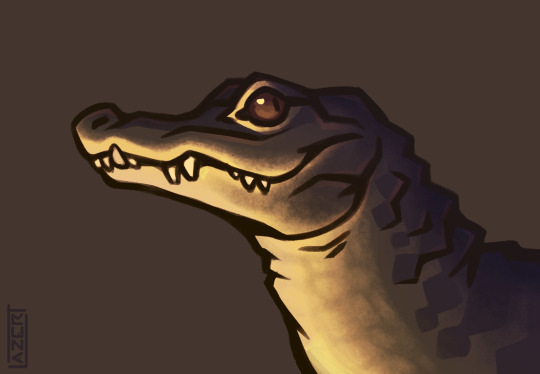
Chinese Alligator for a $5 Ko-fi supporter
#art#my art#digital art#clip studio#clip studio paint#csp#kofi#ko-fi#kofi commissions#commissioned work#request#doodle#coloured#alligator#chinese alligator#yangtze alligator#alligator sinensis#lazert#lazer-t
237 notes
·
View notes
Text
Skeletal and Osteoderm Guide of Chinese alligator

Here is the skeletal and osteoderm guide of Alligator sinensis "Chinese alligator”.
The proportions were based on Specimen No. 1335 from Cong (1998) and scaled to the largest male recorded in the wild. Osteoderm guide was made for the top view and bottom view. The details were based on skeletal diagrams from the same study and other images of Chinese alligator skeletons.
References:
Cong (1998). THE GROSS ANATOMY OF ALLIGATOR SINENSIS FAUVEL
#chinese alligator#alligator#gator#crocodilian#crocodilia#croc#crocodylomorpha#pseudosuchia#size comparison#skeletal#alligator sinensis
11 notes
·
View notes
Text

A drawing of a Chinese alligator in furry anthro style, with casual clothing. I chose this species randomly, using a wheel with the taxonomy of reptiles. I liked the contrast between its fierce appearance and its relaxed outfit. But this species it's actually very chill and scared of humans. What do you think?
#scally#furry art#alligator sinensis#aligator#i hate redacting all this :c#I don know what to write so people see my stuff#anthro#Elzapato_15
0 notes
Text
today's unnecessary research involved delving into the scientific names for various members of the crocodilia order (in order to sate a curiousity I had over some taxonomical classifications) but anyways that doesnt matter what Does matter is that it reminded me of possibly my favorite and certainly the most polite crocodilian: the chinese alligator
#j.txt#they are just GUYS. and little ones at that !!#and do not get me wrong alligator mississippiensis is a wonderful beast that I hold dear to my heart esp after growing up watching them#but something about a. sinensis is just so delightful and captivating to me<3#hold on im going grab pics bc if yall have not ever seen one it will change your life♡
8 notes
·
View notes
Text

Extinct Short-Snouted Gator Munched on Snails 230,000 Years Ago
The extinct species, uncovered in Thailand, is keying researchers into how and when American and Chinese alligators split apart.
In 2005, the residents of Ban Si Lam, a village in northeastern Thailand, dug out their local pond. Amid the topsoil they found some pottery, ceramics, and—to their surprise—an alligator skull.
Researchers initially identified the skull as that of Alligator sinensis, the critically endangered Chinese alligator. But today, a different team of researchers posit that the skull is around 200,000 years old and belongs to an extinct species of alligator. The team’s research was published in Scientific Reports.
The dispersal of Alligator from North America to Asia represents one of the major enigmas in crocodylian evolution,” said Gustavo Darlim, a researcher at Eberhard Karls Universität Tübingen and the study’s lead author, in an email to Gizmodo.
Darlim’s team dubbed the new species A. munensis, named for the Mun River which flows near the site. The skull was dated to younger than 230,000 years ago, and had some features that set it apart from modern alligator species: the reptile had a short, broad snout, a tall skull, and fewer teeth than its extant relatives. With a skull roughly 9 in (25 cm) in length, A. munensis could hardly be called a giant...
Read more: Extinct Short-Snouted Gator Munched on Snails 230,000 Years Ago (gizmodo.com)
53 notes
·
View notes
Text
An extinct deep-snouted Alligator species from the Quaternary of Thailand and comments on the evolution of crushing dentition in alligatorids
Published 13th July 2023
Description of a newly identified species of extinct alligator from the Quaternary of Thailand, Alligator munensis, based on a well preserved skull.
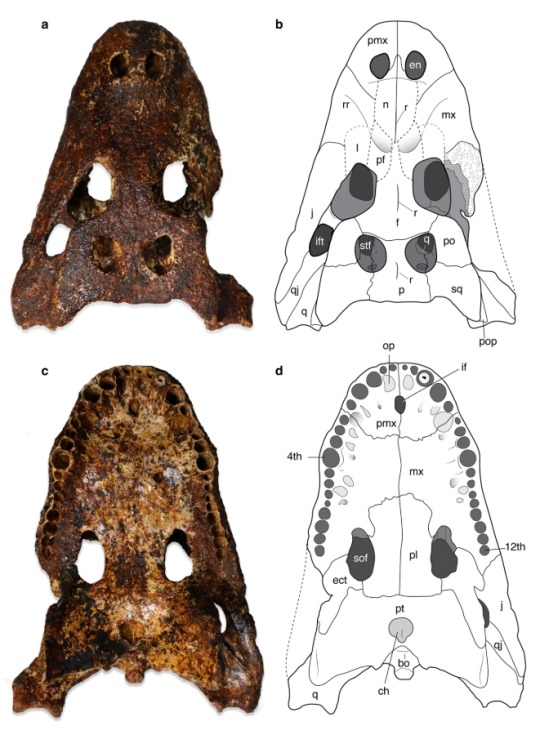
Dorsal and ventral views of the Alligator munensis holotype
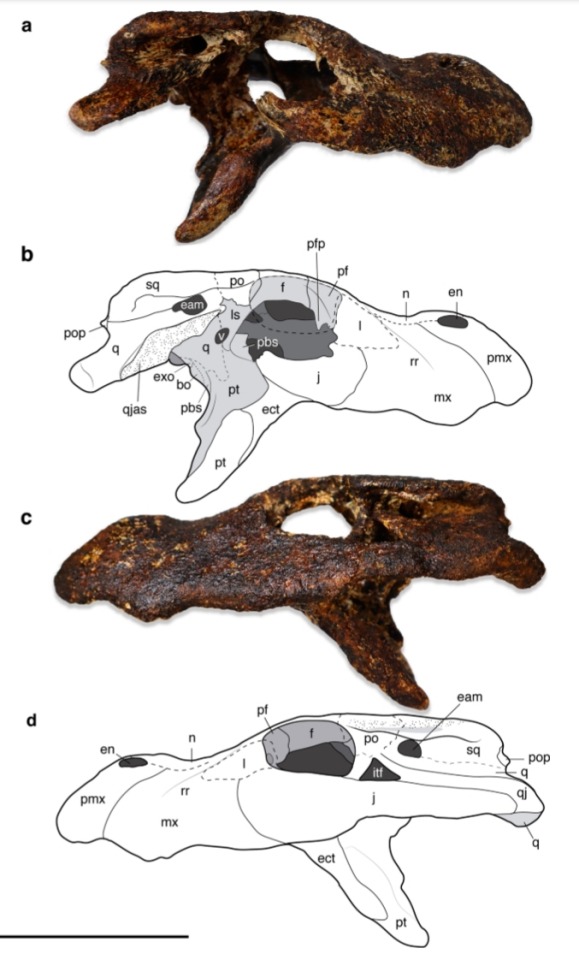
lateral views of the Alligator munensis holotype

Alligator munensis holotype, Alligator mississippiensis (American alligator) and Alligator sinensis (chinese alligator) skulls compared

reconstruction of Alligator munensis, Art by Márton Szabó
Digital 3D model of Alligator munensis holotype:
https://www.morphosource.org/concern/media/000490374
Source:
9 notes
·
View notes
Text
che todavía nadie me explicó por que hay caimanes (o sea mismo género que los americanos, Alligator pero especie sinensis) en China
17 notes
·
View notes
Note
Cecilia here, Happy St. Patrick's Day! I had a good one, got to do the Stations of the Cross, had an easy day at work and had a lovely fish dinner (wasn't sure what my church's stance was on fasting today so better safe than sorry.) Also just finished my 20th day toward my 33 days to Consecration to Mary, and tomorrow going to a 40 days for life rally to pray for a closing of a local abortion clinic. Otherwise have a random question. I love fantasy stuff, like dragons, fairies, the whole shebang. Are there any problems as a Catholic with liking fantasy stuff, or even thinking it could perhaps be real? I mean, unicorns are in the Bible and so are dragons. Like, not worship obviously, but like think they could perhaps exist. God Bless!
Happy St. Patrick’s Day!! ☘️
It sounds like you had an amazing day! You inspire me to keep strong. I had an easy day at work too. My mom brought home shakes, apple pies, and cupcakes! Even though our diocese gave us permission to eat meat today we both felt funny about it so no meat for us either. I read The Confession of Saint Patrick out loud to my mom after turning on the decorative lights, followed by watching Father Stu!
I have absolutely loved fantasy things ever since I was a young child, especially dragons. I was obsessed with dragons for a long, long time..when I was younger. The oldest tales of cultures used to be passed down generation to generation in word, and it is not surprising to find that they used imagery to try and grasp the form of fear of the unknown. Dragons, in fact, used to be drawn on the edge of world maps of old, because not a lot was known like we have now. Dragons are a common story found across all continents around the world, some see them as monsters and demons, others as ancestors with much wisdom made up of different animals, even made up gods. Satan takes on the form of a dragon, waiting to devour the child of the woman in the Bible. Since Satan was once the most powerful, intelligent angel, it would be easy for him to perhaps transform into such an image. We already know too well who the serpent was. Yes unicorns are mentioned as well!
It’s important to realize the difference between reality vs fiction as a Catholic. There is nothing wrong with admiring fictional creatures that artists and authors give us, but it becomes a problem if we worship them or think that specific fictional creation by some author itself is real, for example, Spyro, and tell others the lie that Spyro is a real animal. There are ways it can lead to sin, so make sure to ask your confessor next time you go so you can be informed better than I can explain. I think it’s important to also note that the veil we can’t see behind is real and there are real classified animals created by God that are very much dragon-like that you can actually learn about and see in real life. (I don’t know my horses as well as lizards so you must forgive me.) For example here are just a few… There are over 41 species of Draco alone.

Draco taeniopterus (Thai flying dragon)
We also have this guy….they have been known to attack, kill, and eat humans! Yikes!
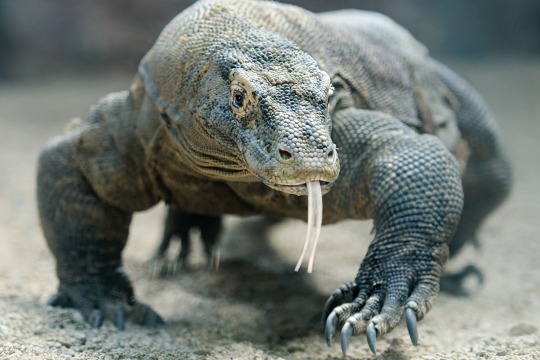
Varanus komodoensis (Komodo dragon)!!
There are at least six or more species of Pogona (bearded dragon)…


Phycodurus eques (leafy sea dragon)

Tribolonotus gracilis (Red-eyed Crocodile Skink)

Dracaena guianensis (Northern Caiman Lizard)

Ouroborus cataphractus (Armadillo Girdled Lizard)

Hydrosaurus pustulatus (Phillipine Sailfin Lizard)
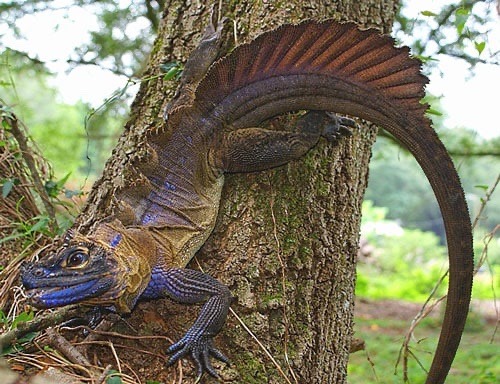
Alligator sinensis (Chinese alligator)
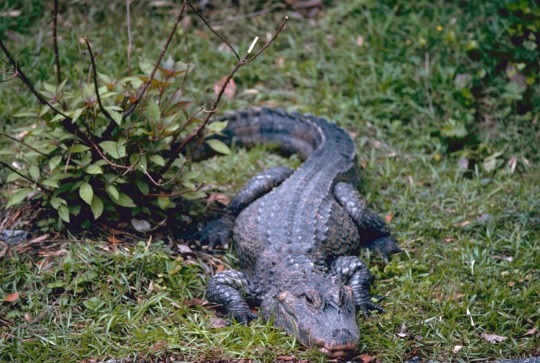
5 notes
·
View notes
Text
Alligator Sound
Download free Alligator Sound
An alligator, sometimes known as a gator, is a big reptile belonging to the genus Alligator, family Alligatoridae, order Crocodilia. There are two extant species: the American alligator (A. mississippiensis) and the Chinese alligator (A. sinensis). In addition, fossil remains have revealed numerous extinct alligator species. Alligators initially arose approximately 37 million years ago, in the…
0 notes
Text









Alligators are large reptiles belonging to the family Alligatoridae. There are two species of alligators: the American alligator (Alligator mississippiensis) and the Chinese alligator (Alligator sinensis).
American Alligator: This species is found primarily in the southeastern USA, including all of Florida and Louisiana, parts of Georgia, Alabama, Mississippi, North and South Carolina, Texas, Oklahoma, and Arkansas. They inhabit freshwater environments like ponds, marshes, wetlands, rivers, lakes, and swamps.
Chinese Alligator: Much smaller and critically endangered, the Chinese alligator is native to the Yangtze River valley and resides mostly in slow-moving freshwater rivers and streams.
American alligators are more commonly encountered and are a notable feature of places like the Florida Everglades. The Everglades, a large tropical wetland area in southern Florida, is a popular spot for observing alligators in their natural habitat. They can often be seen basking on banks or floating in the water. Alligator-watching is a popular activity in the area, often conducted from the safety of airboats, which are boats equipped with a flat bottom and a large fan for propulsion, designed to navigate shallow, marshy areas.
0 notes
Photo

Chinese Alligator (Alligator sinensis) at Sedgwick County Zoo #chinesealligator #alligatorsinensis #alligator #crocodilian #reptilesofinstagram #zoos #zoophotography #zoophoto #sedgwickcountyzoo https://www.instagram.com/p/Cp7hs0-rD46/?igshid=NGJjMDIxMWI=
#chinesealligator#alligatorsinensis#alligator#crocodilian#reptilesofinstagram#zoos#zoophotography#zoophoto#sedgwickcountyzoo
0 notes
Photo

Are you excited for @dv8artwalk tomorrow because we are. We won't have this color at tomorrow's artwalk, but we will have this Chinese Alligator skull in a different color. Come look, and come see what else we have and what the other incredible artist's have. Pin designed by @onioncakes . . . 🐊 #crocodile #crocodillian #reptileart #reptiles #herpetology #herping #reptilehobby #chinesealligator #alligator #muddydragon #yangtzealligator #notalizard #herper #pingamestrong #pincollecting #vultureculture #criticallyendangered #扬子鳄 #Alligator sinensis #lapelpins #enamelpins #originaldesign https://www.instagram.com/p/ClFlEuvr7oZ/?igshid=NGJjMDIxMWI=
#crocodile#crocodillian#reptileart#reptiles#herpetology#herping#reptilehobby#chinesealligator#alligator#muddydragon#yangtzealligator#notalizard#herper#pingamestrong#pincollecting#vultureculture#criticallyendangered#扬子鳄#lapelpins#enamelpins#originaldesign
1 note
·
View note
Text
Fossile di una specie di alligatore Deep-Snouted trovato in Thailandia
Ricostruzione artistica dell’Alligator munensis.
La nuova specie identificata è strettamente imparentata con l’alligatore cinese (Alligator sinensis), l’unico rappresentante vivente degli Alligatoridae (il gruppo di caimani e alligatori) al di fuori delle Americhe.
Chiamata Alligator munensis, la nuova specie è vissuta meno di 230.000 anni fa in Thailandia.
Il cranio quasi completo del…

View On WordPress
0 notes
Text







3 notes
·
View notes
Text
early 2022, historians/researchers slowly and casually rolling out of bed, in their pyjamas, with a cup of tea:
“oh yea, by the way, no big deal, we almost forgot to mention that a previously-undescribed species of bold bizarre strikingly-unique 6-meter-long giant crocodile beast lived alongside sophisticated architecture and densely-populated human settlements in the Bronze Age near Guangzhou, Hong Kong, and the cultural epicenter of the Pearl River Delta, and may have lived for centuries throughout the advent of Chinese civilization all the way until 1630 AD, and naturalists and historians just never really discussed this, ever, have a nice day.”
kinda like: “y’know how so-called Ice Age megafauna like woolly mammoths were still alive on Earth hundreds of years after the construction of Egypt’s great pyramid? yea, also there was a giant crocodile beast.”
skeletal and bodily remains from the Hong Kong area have now been reliably dated, and the large “new” species has been officially described as of March 2022. the creature is now known as Hanyusuchus sinensis.

---

---

---
previously, it was kinda assumed by historians/ecologists that saltwater crocodiles may have lived farther north along the Chinese coastline, and that these saltwater crocodiles accounted for the mention of larger, more aggressive crocodiles in stories from the Pearl River Delta region (relative to historical mentions of the smaller, much more docile Chinese alligator)
but, these large crocodilians mentioned in stories may have been this new gharial. the researchers describe the remains of some gharials from the Shang and Zhou eras, which were apparently killed by humans with axes.


here’s where remains of the gharial have been found, from the paper:

today, this region is home to tens of millions of people and arguably the largest contiguous urban agglomeration on the planet (Guangzhou, Shenzhen, and Hong Kong).
the formal academic paper from 2022 which describes the new species of gharial has many high-resolution photos of skulls/skeletons of the gharial. though the remains can be reliably dated to the Bronze Age, the authors suggest that literature/historical text mentions of large crocodilians might indicate that Hanyusuchus survived until 1630 AD. (again, though, the literature mentions may also possibly refer to saltwater crocodiles, maybe?)
the paper also includes a short list of excerpts from historical texts from the Pearl River Delta region that mention the large crocodilians.
check it out:
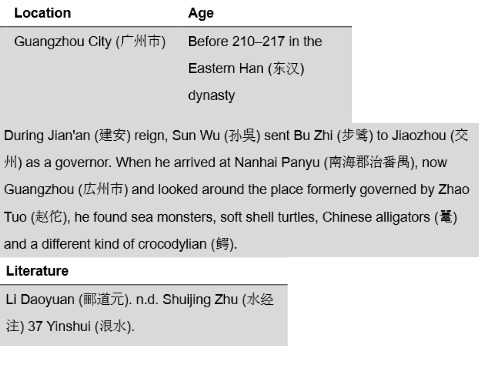
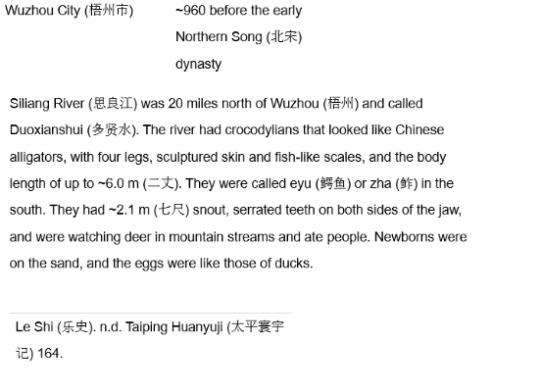
Hanyusuchus:

4K notes
·
View notes
Text

Grzimek's Animal Life Encyclopedia. Volume 6: Reptiles. Written by Bernard Grzimek. 1984. Illustration by Helmut Diller.
1.) Dwarf caiman (Paleosuchus palpebrosus)
2.) Chinese alligator (Alligator sinensis)
3.) Spectacled caiman (Caiman crocodilus)
4.) Black caiman (Melanosuchus niger)
5.) American alligator (Alligator mississippiensis)
#reptiles#crocodilians#caimans#dwarf caimans#spectacled caimans#black caimans#alligators#chinese alligators#american alligators#Helmut Diller
336 notes
·
View notes